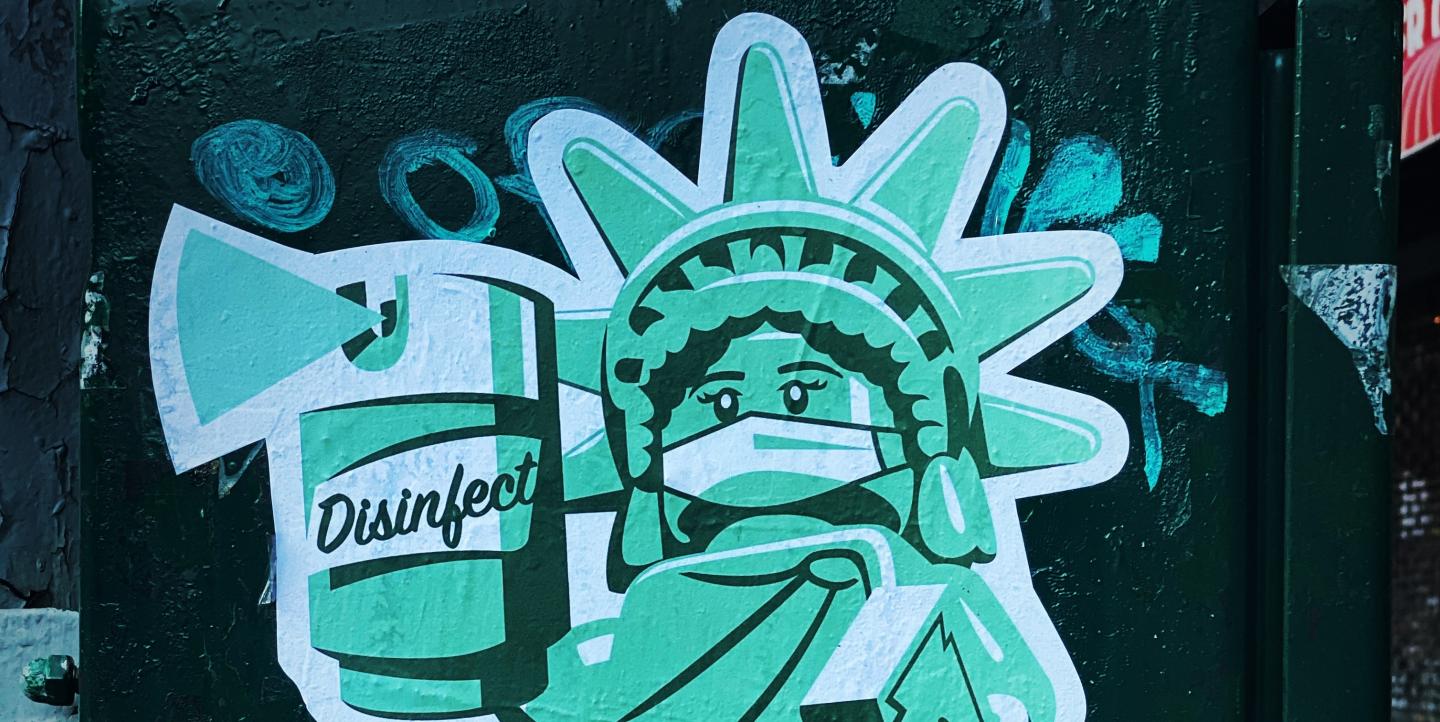In partnership with our parent organization, the International Center for Journalists (ICFJ), IJNet is connecting journalists with health experts and newsroom leaders through a webinar series on COVID-19. The series is part of the ICFJ Global Health Crisis Reporting Forum.
This article is part of our online coverage of reporting on COVID-19. To see more resources, click here.
From a pandemic hot spot to police brutality and street protests in Minneapolis, CNN national correspondent Miguel Marquez has covered the major stories upending American life during the first half of 2020.
As New York City became the center of the COVID-19 pandemic in the U.S., his stories from New York hospitals showed overworked medical staff without proper personal protection equipment, hallways crowded with patients and morgue trucks filled to capacity.
A week ago, as Marquez was wrapping up a trip to the upper Midwest to cover the pandemic’s economic impact, Minneapolis police officers were captured on video killing 46-year-old black resident George Floyd, who was suspected of passing a counterfeit US$20 bill. CNN sent Marquez to cover the city’s protests.
Marquez shared his experiences covering these crises, along with his advice for fellow reporters, during an ICFJ webinar Thursday. Patrick Butler, ICFJ Vice President-Content and Community, moderated the session.
Here are key quotes from the discussion:
On CNN’s access to New York hospitals
CNN desk producers called many hospitals daily in search of permission. “In New York, there was a real sense of the immediacy ... that the rest of the country wasn't quite getting it. I think there was real fear about what was happening in New York.” The Brookdale Hospital in Brooklyn contacted CNN on a weekend and allowed the crew to film for two to three hours, including about 15 minutes in the emergency room, he said.
[Read more: Lessons learned from reporting on the pandemic: China]
On managing the privacy of hospital patients
When CNN showed up to film, the hospital didn’t want large television cameras in the emergency room, but allowed Marquez to shoot footage from his cell phone. “When we were editing, the number of lawyers, the number of standards people, the number of CNN eyes on that story before it went to air, it was a lot of eyes and it was a lot of blurring of anything, not just faces, but feet, bracelets, anything that they were wearing that might be identifiable. Any screens, anything that's on their wrists, anything that could be blown up and seen. All those sorts of things we took into account.”
On the lack of support and equipment for medical workers
- “They were jealous of [the personal protective equipment] we were wearing. They now have it. After that story, they got inundated with gear from people who were helping. But at the time, individuals, doctors, nurses, administrators, were stopping in at Home Depot” on their way to work to buy disposable coveralls intended for home maintenance projects.
- “The psychological toll on health care workers is something that we’re going to be dealing with for years to come.”
Advice for journalists covering the pandemic
“Try to tell the story of how this is affecting real people. And the way that it is changing healthcare, government, politics, it is endless the number of stories and the way that the pandemic is changing the way that we work, we operate.”
On why standards are different for blurring footage of trauma in the U.S. and overseas
- “It’s [a matter of] different laws, different rules. We are very protective of hospitals here because they are protective because of HIPAA rules [the U.S. Health Insurance Portability and Accountability Act Privacy Rule standards]. If they [the hospitals] invite us in and allow us in, then we have to live up to their standards.”
- “I think there is a very big difference in the way that we treat international material versus domestic. That said, if you look at the George Floyd stuff and how horrendous that video was, we've shown it a lot,” he said. “We don't use it in teases, we don't just use it as wallpaper to talk over pictures, but to talk specifically about what is happening in that eight minutes and forty-six seconds that a cop kneed his neck. It bears watching, even though it's uncomfortable.”
On which pandemic-related stories will come next
“How it is going to change our economies, our economy here and the economies around the world. [CNN parent company] Warner Media has just moved into its fancy-schmancy new headquarters in New York, and they've calculated that if we wanted to move all those employees back in now, they’d need about two or three times the space to get proper social distance.
“So I think companies across the board are going to be facing this. How do you squeeze your employees back into offices where there's not space? Until there’s a vaccine, until there’s a cure, until you or I feel confident that we're not going to give it to our grandparents or our friends or children, I don't think anything's going to be normal.”
On how the current civil unrest will affect the pandemic
“There is a lot of body fluids being spread between protestors and police, and [among] protestors. I think we’ll see a spike...we’re maybe eight, maybe ten days off from spikes in those areas.”
[Read more: Tips for reporting on anti-police violence protests in the U.S.]
On the Minnesota state police’s on-air arrest of a CNN crew, led by correspondent Omar Jimenez, who is black
The police “couldn’t have figured out a better way to undermine credibility in that moment. It was just breathtaking,” Marquez said. “Now they've gone a hundred-eighty degrees. The governor has apologized in person to Omar. He did it in a press conference as well. They've come a long way. But, boy, that was dumb.”
Advice for journalists covering protests
- “Be careful. There’s a desire to be up on the front lines. The problem is, once that initial surge of energy starts, if you’re too close, you’re going to get rolled up in it and you’re either going to get arrested or injured or you’re not going to be able to see what’s happening.”
- “Be in a position where you think you could be a bit safe off to the side, somewhere where you can see stuff happening but be nimble enough that you can move.”
- “For me, it's always about the dynamic of what is driving these protests. What is driving people to be this angry?” he said. “To me, even though you've seen a lot of violence and madness in the streets here, it is those peaceful protests, it is those people that I have spoken to on those long 10-mile marches that they've done here. [The protestors] are young. They are incredibly idealistic. And they want to see a better world. And I know something feels different about this one. And let's hope they're right.”


